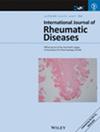Markers of T Lymphocyte Activation in Children With Kawasaki Disease: An Experimental Study From North India
Abstract
Background
The exact pathogenesis of Kawasaki disease (KD) is unknown despite extensive research in the area. Several studies have also implicated CD8+ T lymphocytes in the pathogenesis of KD. However, studies on the activation status of T lymphocytes have shown conflicting results.
Methods
In this prospective study, early (CD69) and late activation (HLA-DR) markers were assessed in T lymphocytes by flow cytometry. We assessed serum levels of soluble CD25 (sCD25) by enzyme-linked immunosorbent assay. We compared these activation markers between children with KD (n = 10), febrile controls (n = 9), and healthy controls (n = 10). Furthermore, we studied the HLA-DRA and HLA-DRB gene expression in subgroups of KD with or without coronary artery aneurysms (CAAs).
Results
A significantly higher percentage of CD69 in CD3+ and CD3 + CD4+ T lymphocytes was noted in KD and febrile controls compared with healthy controls. We found no significant increase in late activation marker HLA-DR in CD3, CD3 + CD4+, and CD3 + CD8+ lymphocytes between KD, febrile, and healthy controls. We observed higher levels of sCD25 in KD and febrile controls than in healthy controls. Longitudinal follow-up in KD showed a decreasing trend of CD69 expression in CD3 + CD8+ lymphocytes and sCD25 levels over time. HLA-DRA and HLABRB expression was comparable between children with CAAs and those without CAAs.
Conclusion
Our study showed early but not late activation of T lymphocytes in children with KD. Markers of lymphocyte activation do fall with subsidence of systemic inflammation following intravenous immunoglobulin therapy in KD.

 求助内容:
求助内容: 应助结果提醒方式:
应助结果提醒方式:


